
What are Stress Fractures?
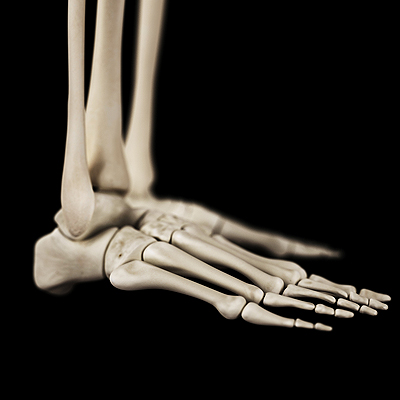 Stress fractures are small hairline fractures in the bone that most often occur from overuse. When the muscles in the body are fatigued, they can become unable to handle repeated shocks to the area. The shock instead transfers to the bone, which can crack. Most often, stress fractures occur in areas of the lower body like the feet and legs. The most common symptom of a stress fracture is pain in the area. If you are experiencing pain in the foot and ankle and think you may have a stress fracture, it is recommended to see a podiatrist. Rest is often the number one method in helping a stress fracture heal. Braces, pain medication, and ice may also be recommended, though not always. To prevent stress fractures, it is advised to start any new athletic activity slowly, gradually work your way up, and stop if you feel pain or have been pushing yourself with little rest.
Stress fractures are small hairline fractures in the bone that most often occur from overuse. When the muscles in the body are fatigued, they can become unable to handle repeated shocks to the area. The shock instead transfers to the bone, which can crack. Most often, stress fractures occur in areas of the lower body like the feet and legs. The most common symptom of a stress fracture is pain in the area. If you are experiencing pain in the foot and ankle and think you may have a stress fracture, it is recommended to see a podiatrist. Rest is often the number one method in helping a stress fracture heal. Braces, pain medication, and ice may also be recommended, though not always. To prevent stress fractures, it is advised to start any new athletic activity slowly, gradually work your way up, and stop if you feel pain or have been pushing yourself with little rest.
Activities where too much pressure is put on the feet can cause stress fractures. To learn more, contact Dr. Mark Gagnon from Advanced Podiatry. Our doctor can provide the care you need to keep your pain free and on your feet.
Dealing with Stress Fractures of the Foot and Ankle
Stress fractures occur in the foot and ankle when muscles in these areas weaken from too much or too little use. The feet and ankles then lose support when walking or running from the impact of the ground. Since there is no protection, the bones receive the full impact of each step. Stress on the feet can cause cracks to form in the bones, thus creating stress fractures.
What Are Stress Fractures?
Stress fractures occur frequently in individuals whose daily activities cause great impact on the feet and ankles. Stress factors are most common among:
- Runners
- People affected with Osteoporosis
- Tennis or basketball players
- Gymnasts
- High impact workouts
Symptoms
Pain from the fractures occur in the area of the fractures and can be constant or intermittent. It will often cause sharp or dull pain with swelling and tenderness. Engaging in any kind of activity which involves high impact will aggravate pain.
If you have any questions please feel free to contact one of our offices located in Crestwood, Orland Park, and Summit, IL . We offer the newest diagnostic and treatment technologies for all your foot and ankle needs.
Dealing with Stress Fractures of the Foot and Ankle
Stress fractures are small breaks in the bone that are caused by repetitive stress. They typically occur due to overuse, forcing the bones of the foot or ankle to continually absorb the full impact of each step taken. Stress fractures can also be caused by abnormal foot structure, osteoporosis, bone deformities, or wearing improper footwear during exercise.
Stress fractures are common for individuals whose daily activities cause high levels of impact on their feet and ankles. Those who run, play tennis or basketball, or practice gymnastics tend to experience these fractures more frequently. Anyone is susceptible to this problem, though. Individuals who are normally sedentary and suddenly begin an intense, high impact workout may sustain stress fractures. This is because their muscles are not yet strong enough to handle and cushion the intensity of their activity. Osteoporosis may also cause someone to get stress fractures, because the disease weakens an afflicted person's bones and makes it easier for them to break down.
Pain from stress fractures typically occurs in the general area of the fracture. Pain can also manifest as “pinpoint pain” or pain that is felt when the site of the injury is touched, and can be accompanied by swelling. It may occur during or after activity, and it may disappear while resting and return when standing or moving. Engaging in any kind of activity, high impact or otherwise, will aggravate the pain. If the intensity of the activity increases before the stress fracture has properly healed, it can cause a full fracture.
Treatment can vary depending on the individual and the degree of injury. The primary way to treat a stress fracture is to rest the hurt foot. Some fractures will heal quickly with only a little bit of rest, while others may require a long rest period and the use of crutches, immobilization, or physical therapy. Under certain circumstances, surgery may be required to install support pins around the fracture to assist in healing.
If you are undergoing a new exercise regimen in running or some other kind of high impact activity, set incremental goals on a weekly basis so you can build up muscle strength. Make sure to wear supportive shoes to better protect you feet.
If you begin to experience any symptoms of stress fractures, you should stop exercising and rest. If the symptoms persist, consult with your podiatrist. Remembering these tips can help you prevent stress fractures to your foot and ankle, and allow you to continue living normally.
Lebron James Still Out From Sprained Ankle
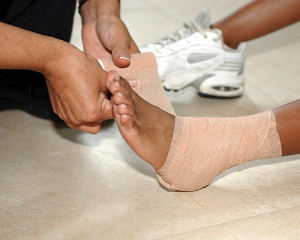 Cleveland Cavaliers small forward (SF) Lebron James recently sprained his left ankle in an unknown way. The injury has forced him to miss two practices so far. James’ condition is unknown, and it is also unknown how long he will be out. X-rays taken after the injury came back negative. Lebron James is a three-time NBA champion and a well-known player. Though his injury is unfortunate for the team, fortunately the Cavaliers recently gained a great player in Dwyane Wade.
Cleveland Cavaliers small forward (SF) Lebron James recently sprained his left ankle in an unknown way. The injury has forced him to miss two practices so far. James’ condition is unknown, and it is also unknown how long he will be out. X-rays taken after the injury came back negative. Lebron James is a three-time NBA champion and a well-known player. Though his injury is unfortunate for the team, fortunately the Cavaliers recently gained a great player in Dwyane Wade.
Sports related foot and ankle injuries require proper treatment before players can go back to their regular routines. For more information, contact Dr. Mark Gagnon of Advanced Podiatry. Our doctor can provide the care you need to keep you pain-free and on your feet.
Sports Related Foot and Ankle Injuries
Foot and ankle injuries are a common occurrence when it comes to athletes of any sport. While many athletes dismiss the initial aches and pains, the truth is that ignoring potential foot and ankle injuries can lead to serious problems. As athletes continue to place pressure and strain the area further, a mild injury can turn into something as serious as a rupture and may lead to a permanent disability. There are many factors that contribute to sports related foot and ankle injuries, which include failure to warm up properly, not providing support or wearing bad footwear. Common injuries and conditions athletes face, including:
- Plantar Fasciitis
- Plantar Fasciosis
- Achilles Tendinitis
- Achilles Tendon Rupture
- Ankle Sprains
Sports related injuries are commonly treated using the RICE method. This includes rest, applying ice to the injured area, compression and elevating the ankle. More serious sprains and injuries may require surgery, which could include arthroscopic and reconstructive surgery. Rehabilitation and therapy may also be required in order to get any recovering athlete to become fully functional again. Any unusual aches and pains an athlete sustains must be evaluated by a licensed, reputable medical professional.
If you have any questions please feel free to contact one of our offices located in Crestwood, Orland Park, and Summit, IL . We offer the newest diagnostic and treatment technologies for all your foot and ankle needs.
How to Prevent Falls in Your Home
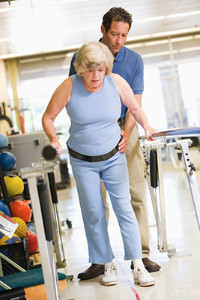 As we get older, our senses and balance begin to wane and the chance of us experiencing a serious fall increases significantly. According to the US Centers for Disease Control and Prevention, falls are the number one cause of fatal injury among older adults and the leading cause for trauma-related hospital admissions. Even more disturbing, every 19 minutes an elderly person dies from a fall. Following the subsequent tips can help prevent falls among the elderly. To start, remove excess clutter and any debris on the floor. Wearing shoes and socks that provide more grip and having skid-proof rugs are a great way to prevent falls. Exercise classes for the elderly can help increase strength and balance; living a sedentary lifestyle and not getting any physical activity actually makes falls more likely. Proper lighting is another key feature that can also help, and automatic night lights can be very useful for illuminating late night trips to the bathroom. Having your eyes and ears checked by a doctor and making sure that your medications do not cause balance loss is vital. Finally, using a cane or walker and installing railings in bathrooms and on both sides of the stairs can provide further support and help prevent falls.
As we get older, our senses and balance begin to wane and the chance of us experiencing a serious fall increases significantly. According to the US Centers for Disease Control and Prevention, falls are the number one cause of fatal injury among older adults and the leading cause for trauma-related hospital admissions. Even more disturbing, every 19 minutes an elderly person dies from a fall. Following the subsequent tips can help prevent falls among the elderly. To start, remove excess clutter and any debris on the floor. Wearing shoes and socks that provide more grip and having skid-proof rugs are a great way to prevent falls. Exercise classes for the elderly can help increase strength and balance; living a sedentary lifestyle and not getting any physical activity actually makes falls more likely. Proper lighting is another key feature that can also help, and automatic night lights can be very useful for illuminating late night trips to the bathroom. Having your eyes and ears checked by a doctor and making sure that your medications do not cause balance loss is vital. Finally, using a cane or walker and installing railings in bathrooms and on both sides of the stairs can provide further support and help prevent falls.
Preventing falls among the elderly is very important. If you are older and have fallen or fear that you are prone to falling, consult with Dr. Mark Gagnon from Advanced Podiatry. Our doctor will assess your condition and provide you with quality advice and care.
Every 11 seconds, an elderly American is being treated in an emergency room for a fall related injury. Falls are the leading cause of head and hip injuries for those 65 and older. Due to decreases in strength, balance, senses, and lack of awareness, elderly persons are very susceptible to falling. Thankfully, there are a number of things older persons can do to prevent falls.
How to Prevent Falls
Some effective methods that older persons can do to prevent falls include:
- Enrolling in strength and balance exercise program to increase balance and strength
- Periodically having your sight and hearing checked
- Discuss any medications you have with a doctor to see if it increases the risk of falling
- Clearing the house of falling hazards and installing devices like grab bars and railings
- Utilizing a walker or cane
- Wearing shoes that provide good support and cushioning
- Talking to family members about falling and increasing awareness
Falling can be a traumatic and embarrassing experience for elderly persons; this can make them less willing to leave the house, and less willing to talk to someone about their fears of falling. Doing such things, however, will increase the likelihood of tripping or losing one’s balance. Knowing the causes of falling and how to prevent them is the best way to mitigate the risk of serious injury.
If you have any questions, please feel free to contact one of our offices located in Crestwood, Orland Park, and Summit, IL . We offer the newest diagnostic and treatment technologies for all your foot care needs.
Exercises for Plantar Fasciitis
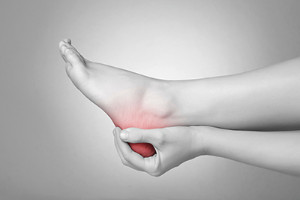 Plantar fasciitis and heel pain can both be very painful and uncomfortable. While stretching won’t eliminate the pain, it can help mitigate it. Some stretches that you can perform include the quadruped stretch, isolated calf raise, and even a foot massage. Before you do these, ask your podiatrist whether stretching is right for you. To do a quadruped stretch, get on all fours and spread your toes on the floor. Next, lean back slowly and sit on your heels while holding this position for 30 seconds. For isolated calf raises, lunge with your left leg forward and right leg back. Then, with your right foot flat, lift up onto the ball of your right foot. Do this for 10-15 reps on each side and for three repetitions. To massage your foot, push down on the center of the bottom of the foot and use a circular motion while applying pressure. These stretches will not eliminate plantar fasciitis and are only meant to temporarily reduce pain. If you have heel pain, it is recommended that you see a podiatrist who can offer effective treatment strategies.
Plantar fasciitis and heel pain can both be very painful and uncomfortable. While stretching won’t eliminate the pain, it can help mitigate it. Some stretches that you can perform include the quadruped stretch, isolated calf raise, and even a foot massage. Before you do these, ask your podiatrist whether stretching is right for you. To do a quadruped stretch, get on all fours and spread your toes on the floor. Next, lean back slowly and sit on your heels while holding this position for 30 seconds. For isolated calf raises, lunge with your left leg forward and right leg back. Then, with your right foot flat, lift up onto the ball of your right foot. Do this for 10-15 reps on each side and for three repetitions. To massage your foot, push down on the center of the bottom of the foot and use a circular motion while applying pressure. These stretches will not eliminate plantar fasciitis and are only meant to temporarily reduce pain. If you have heel pain, it is recommended that you see a podiatrist who can offer effective treatment strategies.
Plantar fasciitis can be very painful and inconvenient. If you are experiencing heel pain or symptoms of plantar fasciitis, contact Dr. Mark Gagnon from Advanced Podiatry. Our doctor can provide the care you need to keep you pain-free and on your feet.
What Is Plantar Fasciitis?
Plantar fasciitis is the inflammation of the thick band of tissue that runs along the bottom of your foot, known as the plantar fascia, and causes mild to severe heel pain.
What Causes Plantar Fasciitis?
- Excessive running
- Non-supportive shoes
- Overpronation
- Repeated stretching and tearing of the plantar fascia
How Can It Be Treated?
- Conservative measures – anti-inflammatories, ice packs, stretching exercises, physical therapy, orthotic devices
- Shockwave therapy – sound waves are sent to the affected area to facilitate healing and are usually used for chronic cases of plantar fasciitis
- Surgery – usually only used as a last resort when all else fails. The plantar fascia can be surgically detached from the heel
While very treatable, plantar fasciitis is definitely not something that should be ignored. Especially in severe cases, speaking to your doctor right away is highly recommended to avoid complications and severe heel pain. Your podiatrist can work with you to provide the appropriate treatment options tailored to your condition.
If you have any questions please feel free to contact one of our offices located in Crestwood, Orland Park, and Summit, IL . We offer the newest diagnostic and treatment technologies for all your foot and ankle needs.
Caring for Your Diabetic Child’s Feet
 Diabetes presents a number of problems for those who have it. This is especially true for children, who are more likely to sustain a foot injury from playing. Due to decreased sensitivity, a child may not realize they have a wound and not tell their parent. Coupled with poor blood circulation, the wound may not heal and may become infected; this could be very dangerous and, in extreme cases, potentially result in amputation. Both parents and children should know what to look for and how to care for diabetic feet. This includes doing daily foot inspections for wounds or any abnormal signs. Diabetic children should wash their feet with warm water and make sure to dry them properly. Make sure to avoid extremely hot and cold environments, and check the water temperature first before washing. Children should also avoid walking barefoot. Be sure to inspect shoes for any objects inside and to ensure the interior is smooth. Finally, seeing a podiatrist for an examination several times a year is highly recommended.
Diabetes presents a number of problems for those who have it. This is especially true for children, who are more likely to sustain a foot injury from playing. Due to decreased sensitivity, a child may not realize they have a wound and not tell their parent. Coupled with poor blood circulation, the wound may not heal and may become infected; this could be very dangerous and, in extreme cases, potentially result in amputation. Both parents and children should know what to look for and how to care for diabetic feet. This includes doing daily foot inspections for wounds or any abnormal signs. Diabetic children should wash their feet with warm water and make sure to dry them properly. Make sure to avoid extremely hot and cold environments, and check the water temperature first before washing. Children should also avoid walking barefoot. Be sure to inspect shoes for any objects inside and to ensure the interior is smooth. Finally, seeing a podiatrist for an examination several times a year is highly recommended.
Making sure that your children maintain good foot health is very important as they grow. If you have any questions, contact Dr. Mark Gagnon of Advanced Podiatry. Our doctor can provide the care you need to keep you pain-free and on your feet.
Keeping Children's Feet Healthy
Having healthy feet during childhood can help prevent medical problems later in life, namely in the back and legs. As children grow, their feet require different types of care. Here are some things to consider...
Although babies do not walk yet, it is still very important to take care of their feet.
Avoid putting tight shoes or socks on his or her feet.
Allow the baby to stretch and kick his or her feet to feel comfortable.
As a toddler, kids are now on the move and begin to develop differently. At this age, toddlers are getting a feel for walking, so don’t be alarmed if your toddler is unsteady or ‘walks funny’.
As your child gets older, it is important to teach them how to take care of their feet.
Show them proper hygiene to prevent infections such as fungus.
Be watchful for any pain or injury.
Have all injuries checked by a doctor as soon as possible.
Comfortable, protective shoes should always be worn, especially at play.
If you have any questions please feel free to contact one of our offices located in Crestwood, Orland Park, and Summit, IL . We offer the newest diagnostic and treatment technologies for all your foot and ankle needs.
Preventing Foot Injuries for the Active Elderly
 Compared to younger athletes, elderly athletes are more likely to suffer a foot injury as they get older. Foot conditions and injuries that affect all ages include plantar fasciitis, ankle sprains, stress fractures, and Morton’s neuroma. While the sport one plays can vary, there are certain things that athletes of all ages can do to prevent foot injuries. Wearing an ankle brace can help prevent sprains, while quality footwear can prevent foot pain. Proper arch support can be the difference between comfort and discomfort. Custom orthotics may be necessary for some people who have flat or unsupported feet. Stretching is vital, and everyone should stretch not only before an activity but after as well. Finally, keeping your feet dry by changing socks and using foot powder can prevent conditions like athlete’s foot. If you are an elderly athlete, be sure to see a podiatrist to see if certain activities are right for you.
Compared to younger athletes, elderly athletes are more likely to suffer a foot injury as they get older. Foot conditions and injuries that affect all ages include plantar fasciitis, ankle sprains, stress fractures, and Morton’s neuroma. While the sport one plays can vary, there are certain things that athletes of all ages can do to prevent foot injuries. Wearing an ankle brace can help prevent sprains, while quality footwear can prevent foot pain. Proper arch support can be the difference between comfort and discomfort. Custom orthotics may be necessary for some people who have flat or unsupported feet. Stretching is vital, and everyone should stretch not only before an activity but after as well. Finally, keeping your feet dry by changing socks and using foot powder can prevent conditions like athlete’s foot. If you are an elderly athlete, be sure to see a podiatrist to see if certain activities are right for you.
Proper foot care is something many older adults forget to consider. If you have any concerns about your feet and ankles, contact Dr. Mark Gagnon from Advanced Podiatry. Our doctor can provide the care you need to keep you pain-free and on your feet.
The Elderly and Their Feet
As we age we start to notice many changes in our body, but the elder population may not notice them right away. Medical conditions may prevent the elderly to take notice of their foot health right away. Poor vision is a lead contributor to not taking action for the elderly.
Common Conditions
- Neuropathy – can reduce feeling in the feet and can hide many life-threatening medical conditions.
- Reduced flexibility – prevents the ability of proper toenail trimming, and foot cleaning. If left untreated, it may lead to further medical issues.
- Foot sores – amongst the older population can be serious before they are discovered. Some of the problematic conditions they may face are:
- Gouging toenails affecting nearby toe
- Shoes that don’t fit properly
- Pressure sores
- Loss of circulation in legs & feet
- Edema & swelling of feet and ankles
Susceptible Infections
Diabetes and poor circulation can cause general loss of sensitivity over the years, turning a simple cut into a serious issue.
If you have any questions please feel free to contact one of our offices located in Crestwood, Orland Park, and Summit, IL . We offer the newest diagnostic and treatment technologies for all your foot and ankle needs.
Taking Care of Minor Foot Wounds In Diabetics
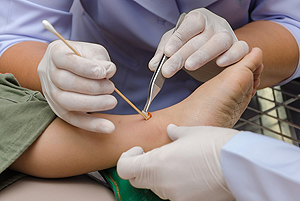 A major problem among those who suffer from diabetes is poor blood circulation and nerve damage. This can lead to diabetics developing foot ulcers that don’t heal properly or quickly. In more severe cases in which the wound has become infected, this can lead to amputation. The first step is to keep the diabetes in check by observing blood glucose levels and staying healthy. Inspecting the foot daily is important because nerve damage can prevent a diabetic from realizing they have an ulcer. Foot inspections can help diabetics discover a wound early so they can alert a podiatrist. If there is a wound, diabetics should wash the wound with saline or clean water. Applying an antibiotic ointment and covering with a bandage is also important. However these solutions are only temporary, and you should see a podiatrist if you have a foot ulcer.
A major problem among those who suffer from diabetes is poor blood circulation and nerve damage. This can lead to diabetics developing foot ulcers that don’t heal properly or quickly. In more severe cases in which the wound has become infected, this can lead to amputation. The first step is to keep the diabetes in check by observing blood glucose levels and staying healthy. Inspecting the foot daily is important because nerve damage can prevent a diabetic from realizing they have an ulcer. Foot inspections can help diabetics discover a wound early so they can alert a podiatrist. If there is a wound, diabetics should wash the wound with saline or clean water. Applying an antibiotic ointment and covering with a bandage is also important. However these solutions are only temporary, and you should see a podiatrist if you have a foot ulcer.
Diabetic foot care is important in preventing foot ailments such as ulcers. If you are suffering from diabetes or have any other concerns about your feet, contact Dr. Mark Gagnon from Advanced Podiatry. Our doctor can provide the care you need to keep you pain-free and on your feet.
Diabetic Foot Care
Diabetes affects millions of people every year. The condition can damage blood vessels in many parts of the body, especially the feet. Because of this, taking care of your feet is essential if you have diabetes, and having a podiatrist help monitor your foot health is highly recommended.
The Importance of Caring for Your Feet
- Routinely inspect your feet for bruises or sores.
- Wear socks that fit your feet comfortably.
- Wear comfortable shoes that provide adequate support.
Patients with diabetes should have their doctor monitor their blood levels, as blood sugar levels play such a huge role in diabetic care. Monitoring these levels on a regular basis is highly advised.
It is always best to inform your healthcare professional of any concerns you may have regarding your feet, especially for diabetic patients. Early treatment and routine foot examinations are keys to maintaining proper health, especially because severe complications can arise if proper treatment is not applied.
If you have any questions please feel free to contact one of our offices located in Crestwood, Orland Park, and Summit, IL . We offer the newest diagnostic and treatment technologies for all your foot and ankle needs.
How to Get a Good Foot Stretch Before You Dance
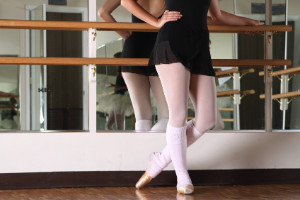 Many dancers focus primarily on stretching out tight muscles in their feet before they dance. While this is important, it is also recommended that dancers stretch their calves and make sure that they have good flex and pointe in their feet and ankles. Using an exercise band while seated on the floor is considered to be a great way to both stretch and workout your foot and calf muscles. Just be sure to stretch under the guidance of an instructor. If you are feeling pain however, be sure to stop exercising and stretching and see a podiatrist who can help your foot heal so you can get back out on the dance floor.
Many dancers focus primarily on stretching out tight muscles in their feet before they dance. While this is important, it is also recommended that dancers stretch their calves and make sure that they have good flex and pointe in their feet and ankles. Using an exercise band while seated on the floor is considered to be a great way to both stretch and workout your foot and calf muscles. Just be sure to stretch under the guidance of an instructor. If you are feeling pain however, be sure to stop exercising and stretching and see a podiatrist who can help your foot heal so you can get back out on the dance floor.
Stretching the feet is a great way to prevent injuries. If you have any concerns with your feet consult with Dr. Mark Gagnon from Advanced Podiatry. Our doctor will assess your condition and provide you with quality foot and ankle treatment.
Stretching the Feet
Being the backbone of the body, the feet carry your entire weight and can easily become overexerted, causing cramps and pain. As with any body part, stretching your feet can serve many benefits. From increasing flexibility to even providing some pain relief, be sure to give your feet a stretch from time to time. This is especially important for athletes or anyone performing aerobic exercises, but anyone experiencing foot pain or is on their feet constantly should also engage in this practice.
Great ways to stretch your feet:
- Crossing one leg over the others and carefully pull your toes back. Do 10-20 repetitions and repeat the process for each foot
- Face a wall with your arms out and hands flat against the wall. Step back with one foot and keep it flat on the floor while moving the other leg forward. Lean towards the wall until you feel a stretch. Hold for 30 seconds and perform 10 repetitions for each foot
- Be sure not to overextend or push your limbs too hard or you could risk pulling or straining your muscle
Individuals who tend to their feet by regular stretching every day should be able to minimize foot pain and prevent new problems from arising.
If you have any questions, please feel free to contact one of our offices located in Crestwood, Orland Park, and Summit, IL . We offer the newest diagnostic and treatment technologies for all your foot care needs.
How to Avoid Common Running Injuries
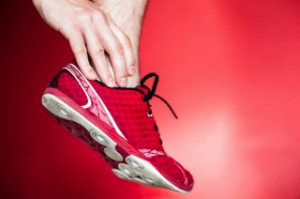 Summer is the most popular time of the year to go outside and become more active. While exercising is beneficial in order to get your body in shape, you are also becoming more susceptible to running injuries. Ankle sprains, stress fractures, and heel pain can all be preventable injuries if you take precautions before jumping into your workout routine. Unsurprisingly, one of the most common sources of running injuries happens to be improper footwear. You should always make sure that the shoes you buy provide enough support for your feet, and are made from a breathable material. Buying shoes that are made for the type of activity you will be performing can also help in avoiding injury. For example, you should buy running shoes if you want to go for a run, and walking shoes if you plan on walking.
Summer is the most popular time of the year to go outside and become more active. While exercising is beneficial in order to get your body in shape, you are also becoming more susceptible to running injuries. Ankle sprains, stress fractures, and heel pain can all be preventable injuries if you take precautions before jumping into your workout routine. Unsurprisingly, one of the most common sources of running injuries happens to be improper footwear. You should always make sure that the shoes you buy provide enough support for your feet, and are made from a breathable material. Buying shoes that are made for the type of activity you will be performing can also help in avoiding injury. For example, you should buy running shoes if you want to go for a run, and walking shoes if you plan on walking.
Exercising your feet regularly with the proper foot wear is a great way to prevent injuries. If you have any concerns about your feet, contact Dr. Mark Gagnon of Advanced Podiatry. Our doctor will treat your foot and ankle needs.
How to Prevent Running Injuries
Many common running injuries are caused by overuse and overtraining. When the back of the kneecap starts wearing out and starts causing pain in your knee, this is commonly referred to as runner’s knee. Runner’s knee is a decrease in strength in your quadriceps and can occur if you’re not wearing properly fitted or supporting shoes. To prevent runner’s knee, focusing on hip strengthening is a good idea, as well as strengthening your quads to keep the kneecaps aligned.
What Are Some Causes of Running Injuries?
- One cause of a common running injury is called iliotibial band syndrome.
- Plantar fasciitis is also another common injury.
- Stress fractures can occur from overtraining, lack of calcium, or even your running style.
Best Ways to Prevent Running Injuries
- Wear footwear that fits properly and suits your running needs.
- Running shoes are the only protective gear that runners have to safeguard them from injury.
- Make a training schedule. Adding strengthening exercises as well as regular stretching can help keep you strong and limber and can lessen the possibility of injuries.
- Stretching keeps muscles limber; this will help you gain better flexibility.
If you have any questions please feel free to contact one of our offices located in Crestwood, Orland Park, and Summit, IL . We offer the newest diagnostic and treatment technologies for all your foot and ankle needs.
